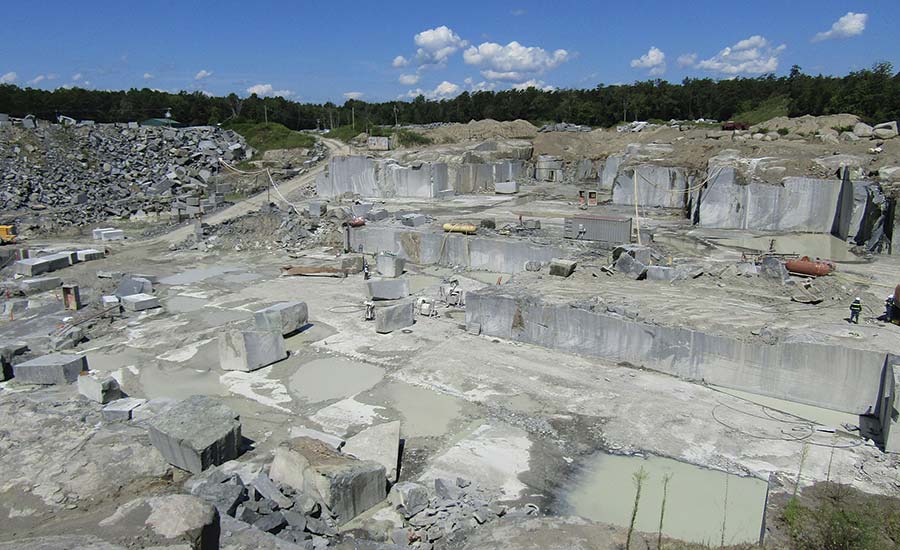Checking Out Granite Quarries in South Africa: A Comprehensive Guide
Checking Out Granite Quarries in South Africa: A Comprehensive Guide
Blog Article
Unveiling the Mysteries of Granite Quarrying: Where Stamina and Elegance Meet
The world of granite quarrying is a realm where the raw toughness of nature merges with human virtuosity to develop structures that stand the test of time with an air of sophistication. From the midsts of quarries to the meticulous polishing in workshops, the process of changing granite right into building wonders is a complex dancing of tradition and advancement. As we peer right into the midsts of this ancient craft, we begin to discover the concealed intricacies that shape the extremely significance of our built atmosphere.
The Beginnings of Granite Quarrying
In the annals of architectural history, the beginnings of granite quarrying are shrouded in a tapestry of old workmanship and geological marvels. Dating back to ancient Egypt and Mesopotamia, the removal of granite from quarries noted the beginning of a trip that would ultimately bring about the production of several of the globe's most iconic frameworks.
Granite quarrying's origins can be mapped to the experienced craftsmens that identified the stone's longevity and visual allure. With a mix of primitive tools and sheer determination, these early quarry employees uncovered granite blocks that would certainly come to be the foundation of human beings.
As human beings advanced, so did the strategies of quarrying granite. The Romans, renowned for their design prowess, developed advanced approaches for removing granite to build monuments, temples, and roads that stood the test of time.
The tradition of these old quarrying techniques continues to form modern-day design, with granite remaining a symbol of toughness and sophistication in construction projects around the globe. (granite quarries in south africa)
Devices of the Quarrying Profession
The evolution of granite quarrying methods from ancient worlds to modern times highlights the important function played by the devices of the quarrying sell forming the market's methods. In old times, quarrying tools were rudimentary, usually being composed of chisels, hammers, and wedges made from products like bronze or iron. These tools needed considerable workforce and time to essence granite obstructs from quarries.

Additionally, the intro of pneumatically-driven devices and high-powered equipment has actually significantly reduced the physical labor required in quarrying operations, enhancing employee safety and security and performance. As the quarrying sector proceeds to introduce, the tools of the trade remain at the center of driving progression and forming the future of granite removal.
Removing Blocks of Granite
Making use of precision machinery and progressed strategies, the removal of granite obstructs from quarries has actually come to be an innovative procedure in the modern quarrying industry. The first action includes identifying the location and dimension of the granite down payment to figure out the most reliable extraction method. As soon as an ideal site is selected, the removal process starts with the boring of holes for the positioning of dynamites. Controlled anonymous blowing up strategies are after that used to disintegrate the granite into convenient areas.

Polishing and Finishing Strategies
To attain a perfect surface on granite blocks, knowledgeable craftsmens employ a collection of precise sprucing up and completing techniques. After the first extraction and forming processes, the granite blocks go through a complete sprucing up phase to improve their all-natural appeal and resilience. One click here for more typical approach utilized in brightening granite is diamond abrasion, where commercial diamonds are made use of to grind and polish the rock to a smooth finish. This procedure not just produces a glossy surface yet likewise makes certain uniformity in shade and texture across the granite block.
In enhancement to sprucing up, finishing methods are related to further fine-tune the granite's look. These techniques may consist of flaming, sharpening, or cleaning, each offering unique structures and coatings to match different aesthetic preferences. Flaming, as an example, entails exposing the granite Web Site surface to high temperature levels to develop a rough, textured finish, ideal for outside applications where slip-resistance is necessary. Honing, on the other hand, provides a matte finish that is smooth to the touch, ideal for indoor counter tops and floor covering. By very carefully picking and applying these polishing and finishing techniques, artisans can change raw granite obstructs right into exquisite items that display both toughness and style.

Ecological Effect and Sustainability
With the expanding emphasis on ecological consciousness in the market, granite quarrying practices are progressively looked at for their influence on all-natural resources and long-lasting sustainability. Quarrying for granite can have considerable ecological implications. The removal procedure typically entails the use of hefty equipment, explosives, and big quantities of water, leading to habitat damage, dirt erosion, and water contamination. In addition, the transport of granite from quarries to refining facilities produces carbon discharges, better adding to environmental deterioration. granite quarries in south africa.
To minimize these effects and make certain sustainability in granite quarrying, market stakeholders are taking on numerous actions. Implementing advanced technologies to decrease energy usage and water use, redeeming quarried land for ecological restoration, and promoting responsible sourcing techniques are some strategies being employed. Furthermore, certifications such as the Woodland Stewardship Council (FSC) and the Management in Power and Environmental Style (LEED) assistance consumers identify ecologically friendly granite products.
Conclusion
In verdict, granite quarrying is a process that requires specialized devices and techniques to essence blocks of granite and brighten them to a high level of finish. While the ecological impact of quarrying can be substantial, efforts are being made to boost sustainability methods in the sector. Generally, granite quarrying is a delicate equilibrium between taking advantage of the strength and style of this natural rock while reducing its impact on the setting.
Report this page